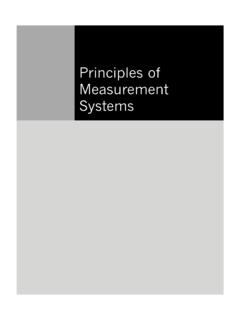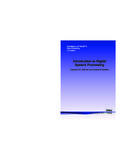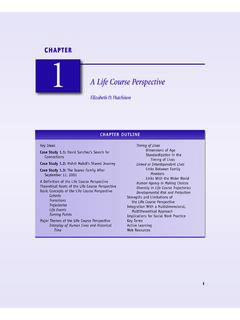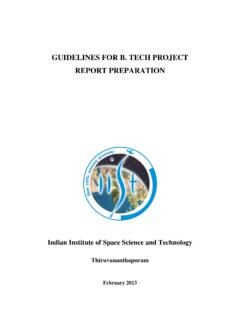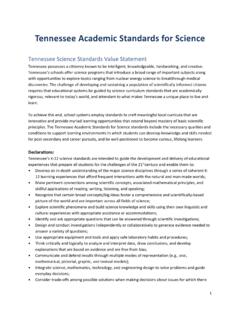Transcription of Communication Systems
1 9/1/09 8:59 AM Page i Communication Systems . An Introduction to Signals and Noise in Electrical Communication FIFTH EDITION. A. Bruce Carlson Late of Rensselaer Polytechnic Institute Paul B. Crilly University of Tennessee 9/1/09 8:59 AM Page ii Communication Systems : AN INTRODUCTION TO SIGNALS AND NOISE IN ELECTRICAL. Communication , FIFTH EDITION. Published by McGraw-Hill, a business unit of The McGraw-Hill Companies, Inc., 1221 Avenue of the Americas, New York, NY 10020. Copyright 2010 by The McGraw-Hill Companies, Inc. All rights reserved. Previous editions 2002, 1986, and 1975. No part of this publication may be reproduced or distributed in any form or by any means, or stored in a database or retrieval system , without the prior written consent of The McGraw-Hill Companies, Inc.
2 , including, but not limited to, in any network or other electronic storage or transmission, or broadcast for distance learning. Some ancillaries, including electronic and print components, may not be available to customers outside the United States. This book is printed on acid-free paper. 1 2 3 4 5 6 7 8 9 0 DOC/DOC 0 9. ISBN 978 0 07 338040 7. MHID 0 07 338040 7. Global Publisher: Raghothaman Srinivasan Director of Development: Kristine Tibbetts Developmental Editor: Lora Neyens Senior Marketing Manager: Curt Reynolds Project Manager: Melissa M. Leick Senior Production Supervisor: Sherry L. Kane Senior Media Project Manager: Jodi K. Banowetz Associate Design Coordinator: Brenda A. Rolwes Cover Designer: Studio Montage, St. Louis, Missouri Compositor: Laserwords Private Limited Typeface: 10/12 Times Roman Printer: R.
3 R. Donnelley Crawfordsville, IN. All credits appearing on page or at the end of the book are considered to be an extension of the copyright page. Library of Congress Cataloging-in-Publication Data Carlson, A. Bruce, 1937 . Communication Systems : an introduction to signals and noise in electrical Communication /. A. Bruce Carlson, Paul B. Crilly. 5th ed. p. cm. Includes index. ISBN 978 0 07 338040 7 ISBN 0 07 338040 7 (hard copy : alk. paper) 1. Signal theory (Telecommunication) 2. Modulation (Electronics) 3. Digital communications. I. Crilly, Paul B. II. Title. 2010. ' 23 dc22. 2008049008. 9/1/09 8:59 AM Page iii To my wife and best friend, Alice Kathleen Eiland Crilly To my parents, Lois Brown Crilly and Ira Benjamin Crilly To my grandmother, Harriet Wilson Crilly 1/15/09 4:14 PM Page iv Pages Contents The numbers in parentheses after section titles identify previous sections that contain the minimum prerequisite material.
4 chapter 1 Frequency Translation and Modulation 58. Introduction 1 Differentiation and Integration 60. Elements and Limitations Convolution ( ) 62. of Communication Systems 2 Convolution Integral 63. Information, Messages, and Signals 2 Convolution Theorems 65. Elements of a Communication system 3 Impulses and Transforms Fundamental Limitations 5 in the Limit ( ) 68. Modulation and Coding 6 Properties of the Unit Impulse 68. Modulation Methods 6 Impulses in Frequency 71. Modulation Benefits and Applications 8 Step and Signum Functions 74. Coding Methods and Benefits 11 Impulses in Time 76. Electromagnetic Wave Propagation Over Discrete Time Signals and the Discrete Wireless Channels 12 Fourier Transform 80. RF Wave Deflection 14 Convolution Using the DFT ( ) 83.
5 Skywave Propagation 14. chapter 3. Emerging Developments 17. Societal Impact and Historical Signal Transmission and Filtering 91. Perspective 20 Response of LTI Systems ( ) 92. Historical Perspective 21 Impulse Response and the Superposition Integral 93. Prospectus 24. Transfer Functions and Frequency Response 96. chapter 2 Block-Diagram Analysis 102. Signals and Spectra 27 Signal Distortion in Transmission Line Spectra and Fourier Series 29 ( ) 105. Phasors and Line Spectra 29 Distortionless Transmission 105. Periodic Signals and Average Power 33 Linear Distortion 107. Fourier Series 35 Equalization 110. Convergence Conditions and Gibbs Nonlinear Distortion and Companding 113. Phenomenon 39 Transmission Loss and Decibels ( ) 116.
6 Parseval's Power Theorem 42 Power Gain 116. Fourier Transforms and Continuous Spectra Transmission Loss and Repeaters 118. ( ) 43 Fiber Optics 119. Fourier Transforms 43 Radio Transmission 122. Symmetric and Causal Signals 47 Filters and Filtering ( ) 126. Rayleigh's Energy Theorem 50 Ideal Filters 126. Duality Theorem 52 Bandlimiting and Timelimiting 128. Transform Calculations 54 Real Filters 129. Time and Frequency Relations ( ) 54 Pulse Response and Risetime 134. Superposition 55 Quadrature Filters and Hilbert Time Delay and Scale Change 55 Transforms ( ) 138. iv 1/15/09 4:14 PM Page v Pages Contents v Correlation and Spectral Density ( ) 141 Phase Modulators and Indirect FM 234. Correlation of Power Signals 141 Triangular-Wave FM 237.
7 Correlation of Energy Signals 145 Frequency Detection 239. Spectral Density Functions 147 Interference ( ) 243. Interfering Sinusoids 243. chapter 4. Deemphasis and Preemphasis Filtering 245. Linear CW Modulation 161 FM Capture Effect 247. Bandpass Signals and Systems ( ) 162. Analog Message Conventions 162 chapter 6. Bandpass Signals 164 Sampling and Pulse Modulation 257. Bandpass Transmission 168 Sampling Theory and Practice Bandwidth 172 ( , ) 258. Double-Sideband Amplitude Chopper Sampling 258. Modulation ( ) 173 Ideal Sampling and Reconstruction 263. AM Signals and Spectra 173 Practical Sampling and Aliasing 266. DSB Signals and Spectra 176 Pulse-Amplitude Modulation ( ) 272. Tone Modulation and Phasor Analysis 178 Flat-Top Sampling and PAM 272.
8 Modulators and Transmitters ( ) 179 Pulse-Time Modulation ( ) 275. Product Modulators 180 Pulse-Duration and Pulse-Position Square-Law and Balanced Modulators 180 Modulation 275. Switching Modulators 184 PPM Spectral Analysis 278. Suppressed-Sideband Amplitude Modulation ( , ) 185 chapter 7. SSB Signals and Spectra 185 Analog Communication Systems 287. SSB Generation 188 Receivers for CW Modulation VSB Signals and Spectra 191 ( , , ) 288. Frequency Conversion and Superheterodyne Receivers 288. Demodulation ( ) 193 Direct Conversion Receivers 292. Frequency Conversion 194 Special-Purpose Receivers 293. Synchronous Detection 195 Receiver Specifications 294. Envelope Detection 198 Scanning Spectrum Analyzers 295. chapter 5. Multiplexing Systems ( , ) 297.
9 Frequency-Division Multiplexing 297. Angle CW Modulation 207 Quadrature-Carrier Multiplexing 302. Phase and Frequency Modulation Time-Division Multiplexing 303. ( ) 208 Crosstalk and Guard Times 307. PM and FM Signals 208 Comparison of TDM and FDM 309. Narrowband PM and FM 212 Phase-Locked Loops ( ) 311. Tone Modulation 213 PLL Operation and Lock-In 311. Multitone and Periodic Modulation 220 Synchronous Detection and Frequency Transmission Bandwidth and Synthesizers 314. Distortion ( ) 223 Linearized PLL Models and FM. Transmission Bandwidth Estimates 223 Detection 317. Linear Distortion 226 Television Systems ( ) 319. Nonlinear Distortion and Limiters 229 Video Signals, Resolution, and Bandwidth 319. Generation and Detection of FM and Monochrome Transmitters and Receivers 324.
10 PM ( , ) 232 Color Television 327. Direct FM and VCOs 233 HDTV 332. 1/16/09 9:43 AM Page vi Pages vi Contents chapter 8 Baseband Pulse Transmission With Probability and Random Variables 345 Noise ( ) 427. Probability and Sample Space 346 Pulse Measurements in Noise 427. Probabilities and Events 346 Pulse Detection and Matched Sample Space and Probability Theory 347 Filters 429. Conditional Probability and Statistical Independence 351 chapter 10. Random Variables and Probability Noise in Analog Modulation Functions ( ) 354 Systems 439. Discrete Random Variables and CDFs 355 Bandpass Noise ( , ) 440. Continuous Random Variables and PDFs 358 system Models 441. Transformations of Random Variables 361 Quadrature Components 443. Joint and Conditional PDFs 363 Envelope and Phase 445.

